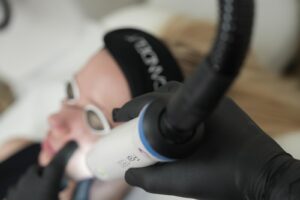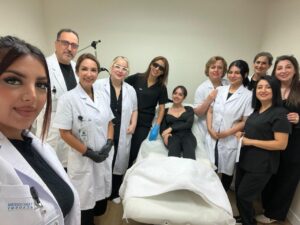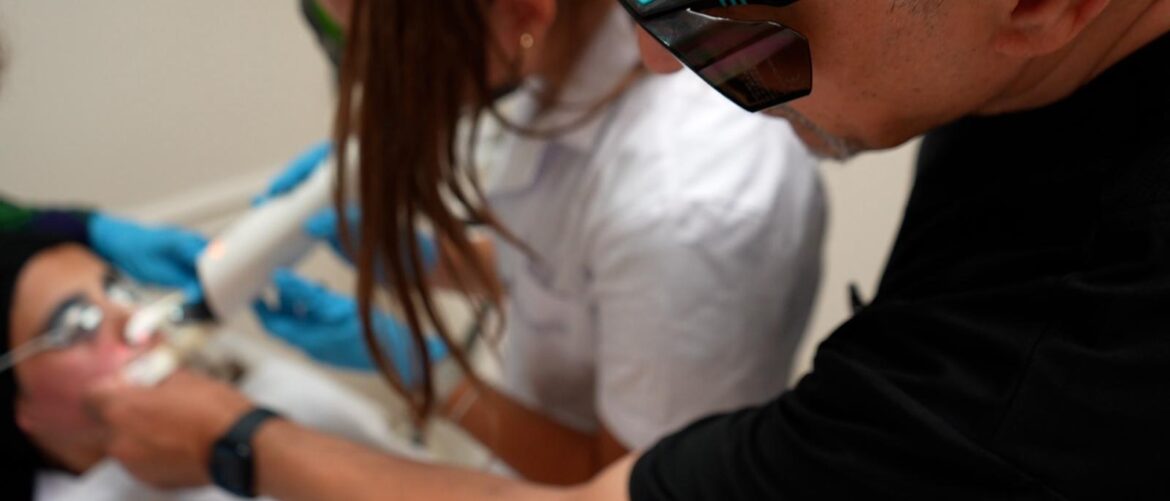Medical Aesthetician: The Critical Importance of Designated, Approved Education and Clinical Training
 Faramarz Rafie MD / VANCODERM ACADEMY AND COLLEGE (VDA) / VANCODERM CLINIC (VDCMed)
Faramarz Rafie MD / VANCODERM ACADEMY AND COLLEGE (VDA) / VANCODERM CLINIC (VDCMed)
In the ever-growing field of beauty and skincare, the term Medical Aesthetician is often misunderstood or misused. With the rise of short courses and weekend certifications, it’s crucial to separate fact from fiction and highlight what truly defines a qualified medical aesthetician. This blog post will delve into the true meaning of the title, how to earn it legitimately, and why a certificate alone—especially from a short course—is not enough.
What Is a Medical Aesthetician? The Right Definition
A Medical Aesthetician is a trained and licensed professional who works in clinical or medical settings, such as dermatology clinics, plastic surgery offices, or medical spas. They specialize in advanced skincare, Skin Regeneration and Rejuvenation treatments that support dermatological and cosmetic medical procedures independently.
Unlike traditional estheticians, medical aestheticians are educated in clinical skin science, anatomy, cosmetic dermatology, wound healing, infection control, Advanced Skincare, Dermaplaning, Chemical Peeling, Body Contouring, Trichology, Laser Fundamentals, Laser Skin Resurfacing, Laser Tattoo Removal, Laser Pigment removal, IPL, Microneedling, Dermal Pen, Radiofrequency, Ultrasound based technologies, Cryotherapy, and often work with pre- and post-operative patients, and some other various procedures. Their work bridges beauty with healthcare—making their role both technical and essential.
How to Become a Medical Aesthetician: The Right Path
To become a qualified medical aesthetician, the proper route involves:
 Formal Education through a Designated College or Institution
Formal Education through a Designated College or Institution
- Enroll in an accredited institution that offers a diploma in medical aesthetics Diploma like Clinical Practitioner Specialist Diploma in Medical Aesthetics at Vancoderm Academy and College.
- The program should have a government-recognized or industry-approved curriculum focusing on medical-grade treatments, safety protocols, skin pathophysiology, and cosmetic procedures.
- Training should also include laser technology, chemical peels, Microneedling, IPL, advanced facials, and more—all rooted in clinical knowledge.
Supervised Practical Experience
Hands-on clinical practice under the guidance of qualified, experienced instructors with backgrounds in dermatology or medical aesthetics. Exposure to real patients and medical-grade equipment ensures students gain competence—not just theory.
Licensing and Registration (Where Applicable)
Some regions require licensure or registration, which further ensures public safety and professional accountability.
The True Identity of a Medical Aesthetician: Education, Ethics, and Standards
The role of a medical aesthetician is frequently misunderstood, often diluted by social media trends or short, unregulated courses claiming to offer “certification” after just a few hours of training. In truth, a medical aesthetician is a clinically trained professional, working in medical environments such as dermatology clinics, plastic surgery offices, and medical spas. Their scope extends far beyond beauty treatments—they perform advanced skin therapies that often support or accompany medical procedures. Unlike traditional estheticians, medical aestheticians are grounded in clinical skin science, anatomy, cosmetic dermatology, wound healing, and infection control, making their work medically informed and safety-critical.
Becoming a true medical aesthetician requires formal education through a designated, accredited institution offering a diploma in medical aesthetics. These programs must be based on an approved curriculum that includes both theoretical knowledge and hands-on clinical practice. Subjects such as skin physiology, pathologies, cosmetic dermatology, and the safe use of medical devices like lasers and Microneedling tools are taught in depth. Supervised clinical training is essential, allowing students to gain practical experience on real patients under the guidance of qualified, experienced instructors. These instructors must themselves have a strong background in medical aesthetics or dermatology and must teach based on evidence-based protocols, not personal or commercial opinions.
One of the biggest misconceptions in this field is the belief that a short course or online certificate can make someone a medical aesthetician. This is not only misleading, but dangerous. Short-term certificate programs simply do not provide the depth of knowledge, clinical training, or legal credentials required to safely and ethically perform medical aesthetic procedures. They may offer a general overview, but they cannot equip students with the scientific foundation, critical thinking, or hands-on experience necessary for real-world practice. Medical aesthetics is not a skill you acquire over a weekend; it is a clinical discipline that must be studied, practiced, and mastered over time through structured, regulated education.
A medical aesthetician derives their professional identity not from a certificate, title, or personal brand—but from their knowledge, competency, and adherence to clinical and ethical standards. Treatments in this field must follow approved clinical protocols and scientific guidelines, not personal preferences or stylistic choices. Medical aesthetics is not an art form open to interpretation; it is a medical-based practice where safety, hygiene, and outcomes depend on strict adherence to standards. Procedures must be performed as outlined in textbooks and recognized medical training materials. Personal intuition or social media trends should never dictate clinical decision-making.
Operating in this field also demands strict compliance with laws and regulations set forth by regional health authorities and regulatory bodies. Medical aestheticians must be fully aware of their legal scope of practice, including which treatments require physician oversight and what procedures are prohibited. Working outside of this scope not only risks client safety but can result in legal consequences. Professionals must also maintain thorough client records, obtain informed consent, and follow infection control protocols rigorously. These are not suggestions—they are legal and ethical requirements intended to protect both the client and the practitioner.
Ethical conduct is equally essential. A medical aesthetician is expected to act with honesty, professionalism, and integrity at all times. This includes safeguarding client confidentiality, avoiding misleading advertising, providing truthful information about treatment outcomes, and always putting client safety ahead of commercial gain. Informed consent must be obtained before any procedure, and clients must be clearly informed of the risks, benefits, and alternatives. If a condition falls outside the aesthetician’s scope—such as signs of skin cancer or uncontrolled acne—they are ethically obligated to refer the client to a licensed medical provider rather than attempt treatment themselves.
Safety and quality are non-negotiable in medical aesthetics. Every procedure must be performed using medical-grade equipment, sterilized tools, and clinically approved techniques. Hand hygiene, PPE, and proper sanitation must be followed before, during, and after every treatment. Rushing procedures, skipping medical history forms, or relying on guesswork is not only unprofessional—it’s unethical and unsafe. Continuous learning is also crucial. True medical aestheticians never stop improving their knowledge. They attend professional conferences, stay updated on new research, and seek mentorship from experienced clinicians—not influencers or unverified online sources.
In conclusion, medical aesthetics is a specialized field deeply rooted in medical knowledge, ethical responsibility, and clinical standards. It cannot and should not be reduced to a trend, a brand, or a weekend course. The title of “medical aesthetician” must be reserved for those who have completed formal, accredited education, gained real clinical experience, and demonstrated a deep understanding of the science behind skin and aesthetic procedures. These professionals are not defined by what they claim, but by what they know—and how safely and ethically they apply it.
Why Short Courses and Certificates Are NOT Enough
In recent years, there has been a surge in one-day, weekend, or short certificate courses promising to turn anyone into a “certified medical aesthetician.” This is deeply misleading—and potentially dangerous.
Here’s why:
- Lack of Depth: A certificate from a short course cannot cover the extensive medical knowledge required to perform advanced skin treatments safely.
- No Medical Foundation: Medical aesthetics is rooted in anatomy, physiology, pathology, some specific skin conditions, and hair and scalp disorders, and diseases, and infection control. Short courses barely skim the surface.
- No Regulatory Recognition: Most of these certificates are not recognized by education authorities. Holding one does not grant legal or professional standing as a medical aesthetician.
- No Practical Experience: True competency comes from working with real patients in real settings, under supervision—not just practicing on classmates for a few hours.
- Misleading Titles: A “certificate” does not entitle someone to use the title medical aesthetician. This term is reserved for those who complete formal, accredited training and have the skills to match.
Knowledge and Skills Define the Professional
The title “Medical Aesthetician” is not something you can buy—it’s something you earn.
- It’s earned through rigorous education, not a quick course.
- It’s earned through clinical hours, not classroom-only learning.
- It’s earned through proven competence and medical understanding, not marketing gimmicks.
The identity of a medical aesthetician comes from their mastery of knowledge, technical skill, and ethical standards—not from a piece of paper labeled “certificate.”
The Role of Institutions and Instructors
A strong foundation in medical aesthetics comes from being educated at a designated and approved college or institution, where:
- Curriculum is regulated and up to date
- Instructors are medically trained or Professionally trained Medical Aesthetician and experienced
- Students receive both theory, Skills, Hands-on practice, Practicum and real-world application
These institutions are held to high standards to ensure that graduates are safe, ethical, and clinically competent professionals.
 Thank you for taking the time to read and better understand the true meaning and professional standards behind the title of a medical aesthetician. For those seeking a truly transformative and clinically advanced education in this field, the Clinical Practitioner Specialist Diploma in Medical Aesthetics at Vancoderm Academy and College is one of the most comprehensive and respected programs available—not only in Canada, but globally. What sets Vancoderm Academy apart is its unique, science-based curriculum, developed in alignment with international medical aesthetics standards and designed to produce highly skilled clinical practitioners—not just technicians. The program integrates advanced medical knowledge, clinical skin science, and real-world patient care, supported by access to state-of-the-art technologies and high-tech equipment used in today’s top medical practices. Students are taught by expert instructors—renowned professionals with years of experience in dermatology, cosmetic medicine, and clinical aesthetics. As a recognized leader in medical aesthetics education, Vancoderm Academy is committed to shaping the next generation of safe, ethical, and highly competent medical aestheticians. Choosing Vancoderm means choosing excellence, integrity, and the highest standard of clinical education in the industry.
Thank you for taking the time to read and better understand the true meaning and professional standards behind the title of a medical aesthetician. For those seeking a truly transformative and clinically advanced education in this field, the Clinical Practitioner Specialist Diploma in Medical Aesthetics at Vancoderm Academy and College is one of the most comprehensive and respected programs available—not only in Canada, but globally. What sets Vancoderm Academy apart is its unique, science-based curriculum, developed in alignment with international medical aesthetics standards and designed to produce highly skilled clinical practitioners—not just technicians. The program integrates advanced medical knowledge, clinical skin science, and real-world patient care, supported by access to state-of-the-art technologies and high-tech equipment used in today’s top medical practices. Students are taught by expert instructors—renowned professionals with years of experience in dermatology, cosmetic medicine, and clinical aesthetics. As a recognized leader in medical aesthetics education, Vancoderm Academy is committed to shaping the next generation of safe, ethical, and highly competent medical aestheticians. Choosing Vancoderm means choosing excellence, integrity, and the highest standard of clinical education in the industry.
Conclusion
Medical aesthetics is not just about beauty—it’s about clinical science, patient care, and professionalism. The increasing popularity of quick certificates has created confusion, but the truth remains:
Only a recognized diploma program, backed by experience and education, can truly prepare someone to be a medical aesthetician.
Choosing the right path may take longer—but it ensures your safety, credibility, and success in a highly specialized field.
Wishing you continued success and safe, rewarding days ahead in your professional journey.

